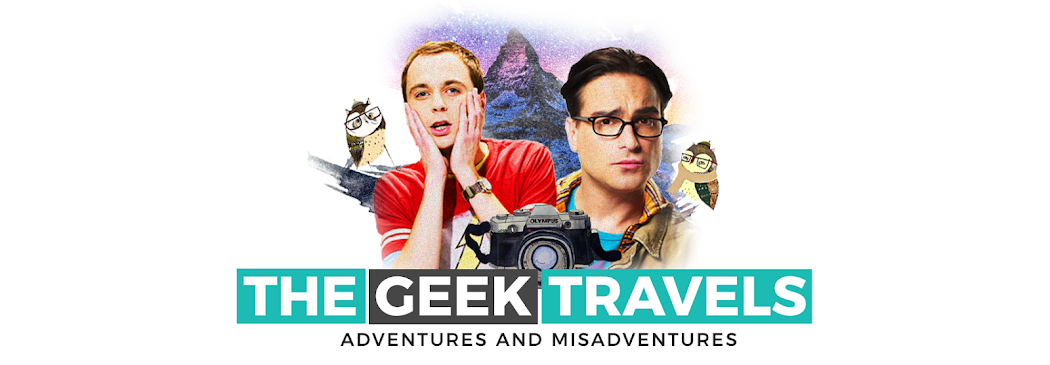I was still feeling groggy from last night's bar hopping activity at Sukhumvit, one of Bangkok's bustling night districts. At half past six, we drove north of Bangkok to explore the former capital of the Kingdom of Siam - Ayutthaya (or as what my travel buddy always say in our chat group, Uttaya LOL).
Unlike most cities in the world who were put under pressure to conform, this former capital of the Siamese kingdom remained immune to these sweeping changes. The vestiges of its past allowed us to understand its influence not just in Thailand, but also throughout southeast Asia.
Phra Nakhon Si Ayutthaya is one of the central provinces (Changwat) in Thailand. It sits on the flat river plain of Chao Phraya river valley. Founded in 1351 by King U-Thong, Ayutthaya was the former capital of Thailand (then called Siam) for 417 years until it was ravaged by the Burmese army in 1767. Today, the city boasts numerous ruins, a clear indication that this was one of Indochina's most influential cities.
Surprisingly, traffic was bearable in northern Bangkok thus, arriving in Ayutthaya earlier than expected. Such a relief!
Wat Phuttaisawan
Nestled on the southern banks of Chao Phraya river is a temple built by King Ramathibodi I, the first King after the establishment of the former capital. It was constructed after his brother defeated the Khmer Army of Kampuchea (Cambodia).
It was half past eight when we arrived at Wat Phuttaisawan. Unlike the very humid weather in Pattaya and Bangkok, we were greeted by Ayutthaya's crisp morning air. The place was quite full, and we were the only Asians who were touring around the area. Monks who were clad in white and orange robes were seen roaming around the temple.
Wat Chai Wattanaram
On the west side of Chao Phraya lies the ruins of Wat Chai Wattanaram. The temple was built during the later years of Ayutthaya in 1630 by King Prasat Thong in honor of his mother's hometown and his coronation. This used to be a royal temple where the king and his successors perform religious ceremonies. It is also believed that the princes and princesses of this former kingdom were cremated and buried inside the complex.
Wat Lokayasutharam
Wat Lokayasutharam is located behind the ancient palace and Pratoochai Primary School. The giant reclining Buddha, also known as Phra Bhuddhasaiyart, is Wat Lokayasutham's most prominent feature. It is made of cement and bricks, a prominent art in Ayutthaya in the mid-1600s.
If you're looking for some refreshments or souvenirs, shops line up right across the giant reclining Buddha. I think this is where the tour buses park.
Wat Phra Si Sanphet
Wat Phra Si Sanphet is another temple ruins in Ayutthaya that one shouldn't miss. Its three prominent spires, known as Chedis, are one of the landmarks of the Ayutthaya Historical Park. Built in 1499 under the reign of King Rama Thibodi II, this temple was used for royal ceremonies and for storing royal relics. The three chedis house the ashes of the three great kings of Ayutthaya Kingdom - King Trailok, King Borom Ratchathirat III, and King Rama Thibodi II. A large gold image of Buddha was stored inside the temple but was later removed by the Burmese army in the late 1700s. The remains of the Buddha was subsequently stored in Bangkok in the early 1900s.
Wat Mahathat
Wat Mahathat (Temple of Great Relics) is another temple that everyone shouldn't miss in Ayutthaya. Located in the heart of the former capital, Wat Mahathat used to be the residence of the Supreme Patriarch or the great leader of the Thai Buddhist Monks. It is also the symbolic center of Ayutthaya where the relics of Buddha are enshrined.
Tourists flock this area for one thing - a Buddha head's embedded on a fig tree's trunk. It is still unknown on how and why the Buddha's head got there.
---
The half day tour in Ayutthaya was an eye-opener to me. History junkies like me will surely love Ayutthaya for its rich past and heritage. Their government took some initiatives and efforts to restore and preserve their past. There are some places that will surely transport you back to their golden age. Back to where I'm from, our leaders have myopic views in history and heritage.
Thailand is a vibrant country, and I guarantee that your first visit will definitely not be the last one. There's so much to visit and experience in Thailand!
Khob kun kab, Thailand!


No comments:
Post a Comment
Comments are highly appreciated. Spread love, not hate! :)